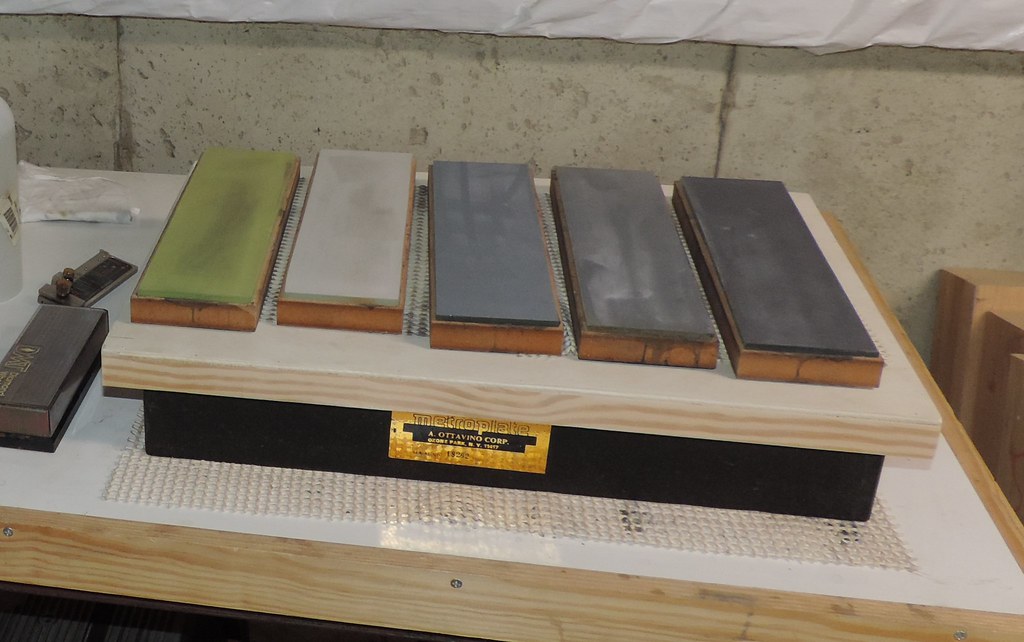Hey guys, ive decided I need to get more serious about my sharpening. The 10 or 12 chisels and 7 or 8 hand planes I use were all sharpened and set up before I really knew much about sharpening. Until now I've been using 1000 and 6000 grit Japanese style waterstones, keeping the 1000 flat with sandpaper on granite and flattening the 6000 with the 1000. Recently I bought an 8000 stone and a leather strop and 1 micron compound. I'm going back through all my edge tools and re-flattening, setting new bevels and re-honing. I've started by flattening chisel backs on a 220 stone, keeping the stone flat with loose silicone carbide on granite. Working on the 220 stone I'm getting immediate results. Marking the back with a sharpie, only after a few strokes the marks are gone and I get a uniform scratch pattern. Moving on to the 1000, things are going slow. I'm not getting a uniform scratch pattern after a few minutes of working back and forth and it appears I have a low spot or two that the 1000 isn't touching. I'm taking care to not dish the stone and re-flattening it frequently. Am I making a mistake going from 220 - 1000? Or should I lower my time expectations and keep working on the 1000 until I get the sheen I want to move on? The chisels are Narex brand, not super high quality but I've heard should get flat prettt quick.




 Reply With Quote
Reply With Quote


 , that's not supposed to happen, right?)
, that's not supposed to happen, right?)


